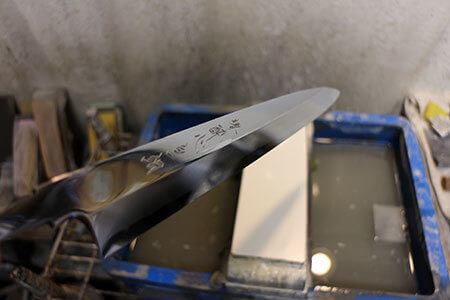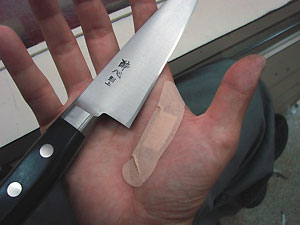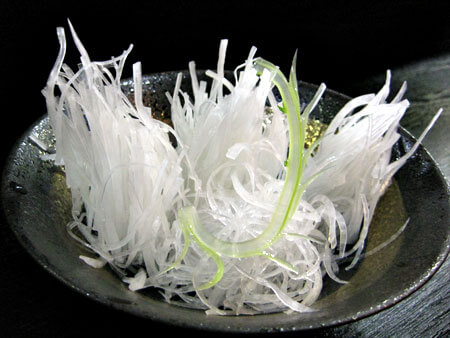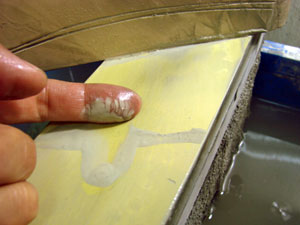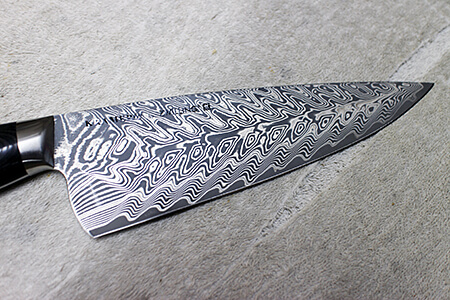Kishubusshin&Suita stone.
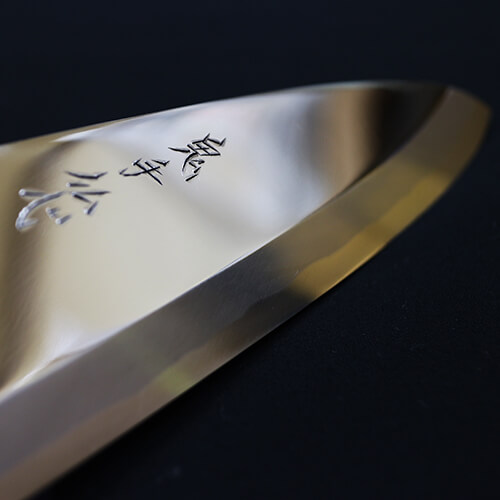
I performed Honbazuke using a natural whetstone on the custom-made “Kishubusshin” mirror-finish knife.
For optimal grip on the Deba, I used a Suita stone.
Lately, I’ve been seeing a lot of bright, flashy finishes, but this time, it turned out with a more subdued, elegant look.
It may appear soft and smooth, but the edge came out razor-sharp.
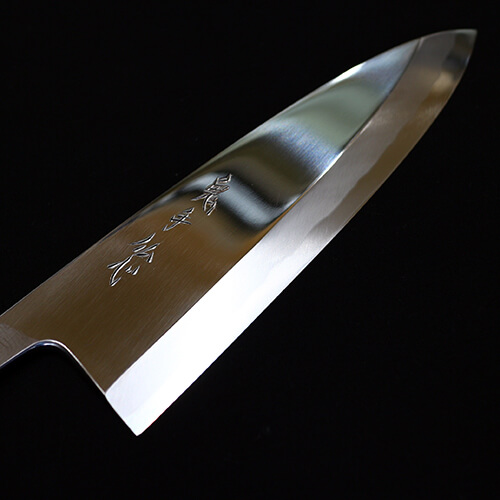
Since Deba knives have a strong curve at the tip, the bevel often develops small steps during sharpening.
Blending those steps into a seamless surface is part of the fun—one of the real joys of sharpening!
However, the Suita I used this time had less “creaminess,” making it harder to let the blade glide smoothly through the slurry.
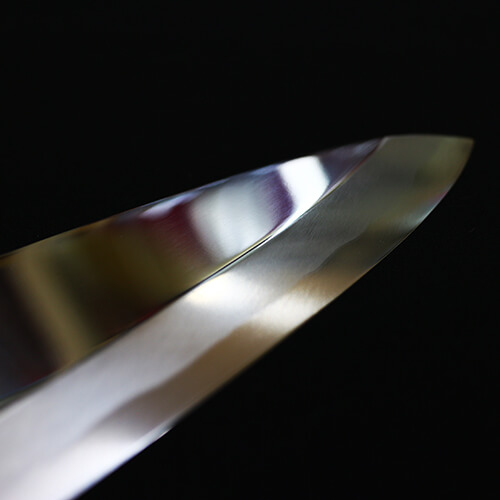
As a result, a faint step remained in the area with the strongest curve.
It won’t affect performance, but ideally, I’d like to refine it further.
I adjusted the base about five times and finished at the best possible balance.

The Shinogi line came out crisp and sharp, as always.
Actually, since this is Honkasumi+, it practically forms naturally.
Using a diamond whetstone also helps maintain a flat surface, preventing any distortion of the Shinogi line.
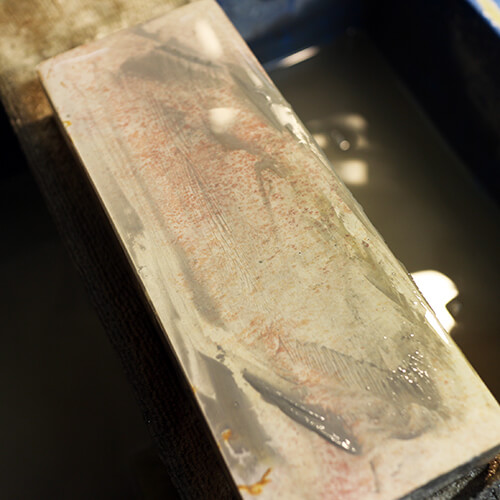
This Suita produces an excellent edge and a beautiful finish, but a slightly softer one might be even better for aesthetics.
Speaking of which—
Do you know why natural whetstones create such a great edge?
It’s not just about having finer abrasive particles!
Once you understand the real reason, you can even achieve consistently great edges with synthetic stones.
Though, when it comes to sheer beauty, natural stones still win!
- 2019-05-16(22:32) :

